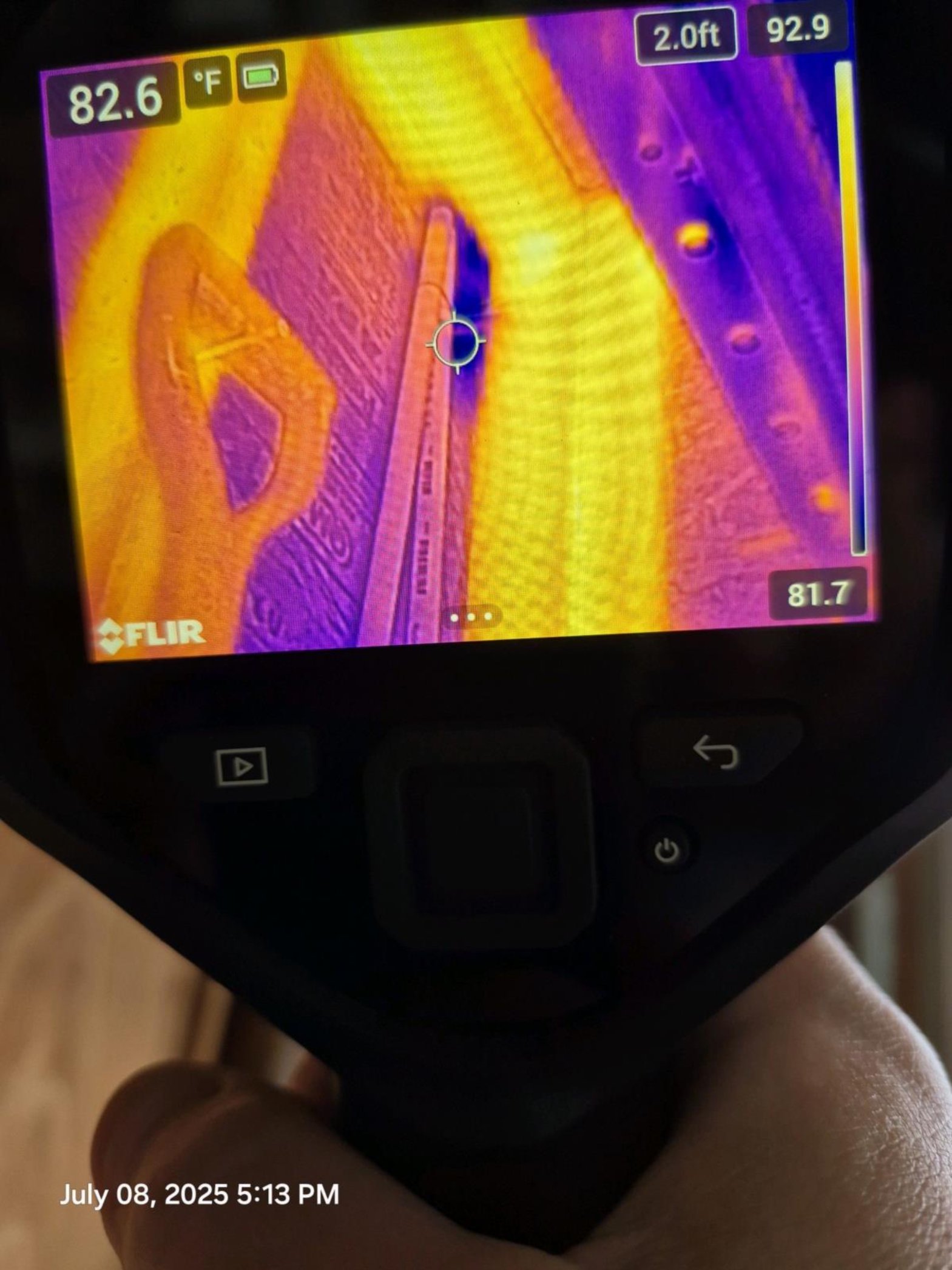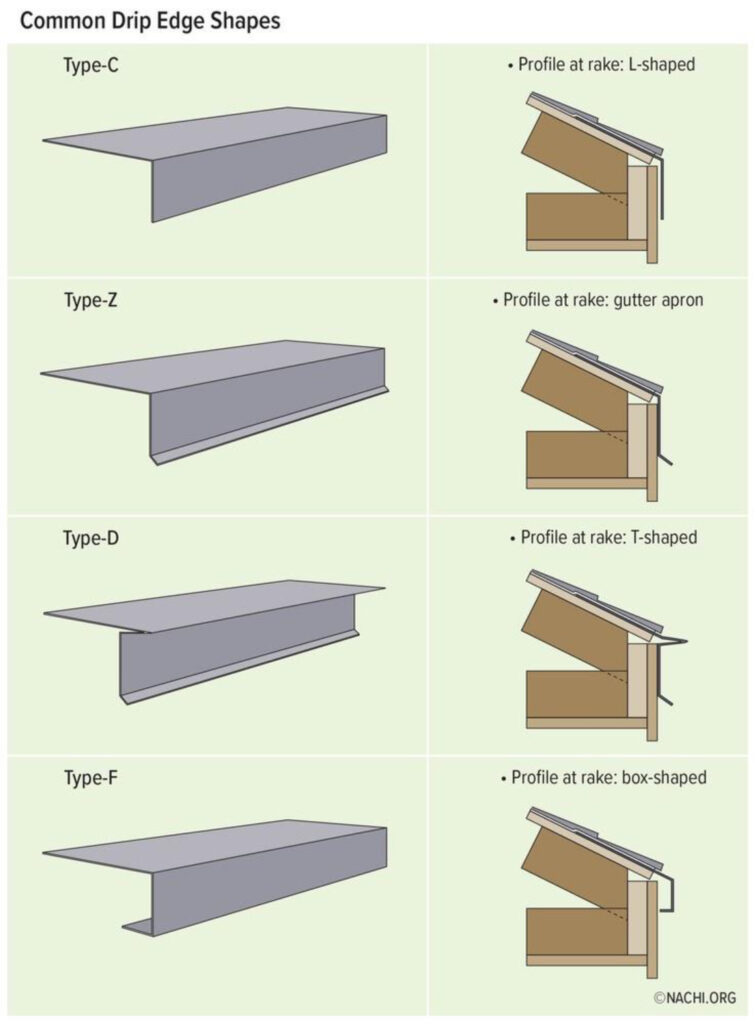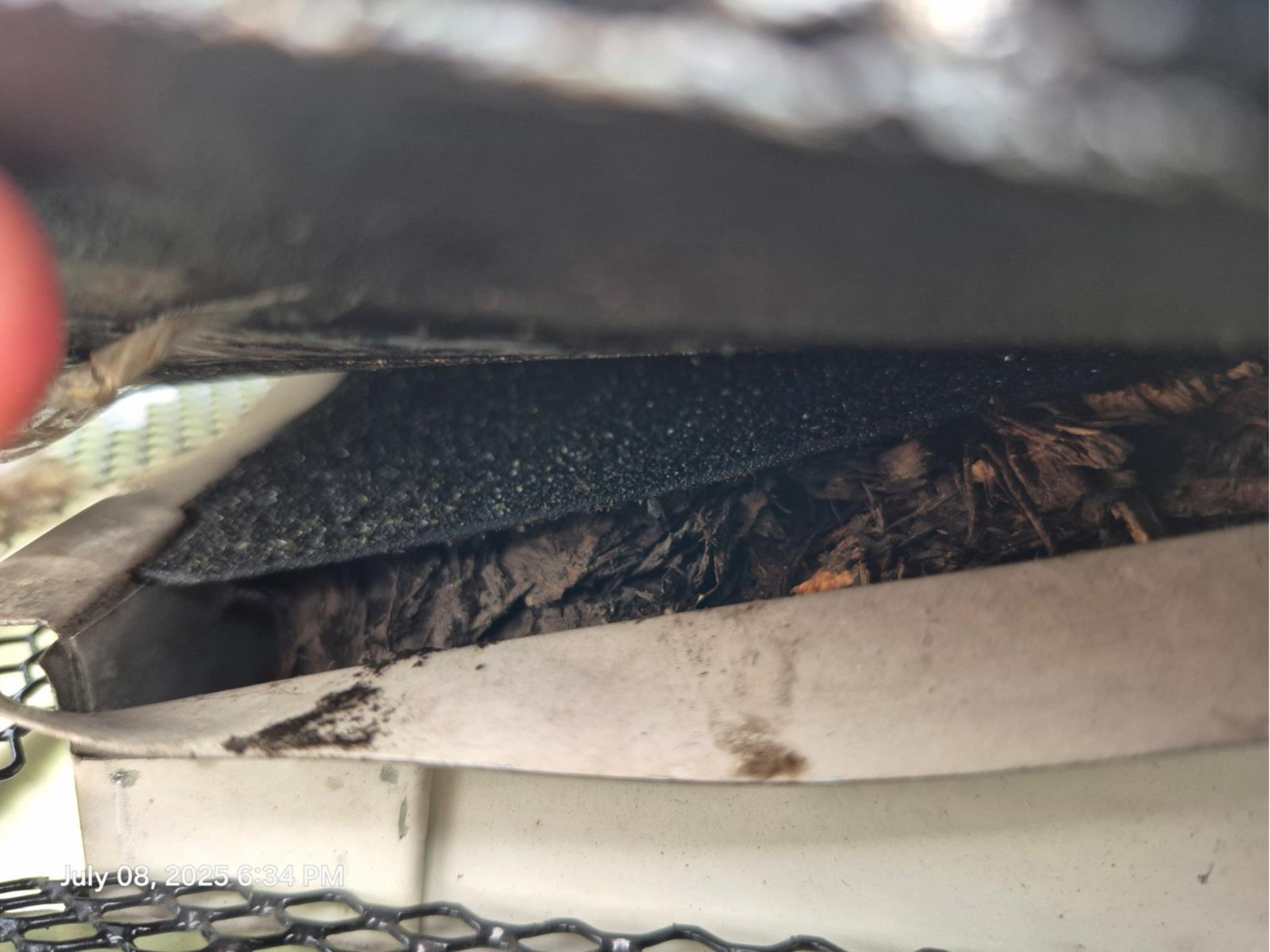Case Study: Improper Gutter and Roofing installation and other factors lead to wood rot and a replacement roof.
By Sean Struckmeyer | Tech Inspect Home Services LLC
Home Consultant helps Homeowner find source of Water in Garage:
In this article, I’ve going to discuss a situation where I Ire able to identify and diagnose a water management issue that has led to a new roof caused by several improper installations of materials. The steps I took and how I’ve continued to provide support to the homeowner post inspection.
What prompted the call?
An eagle eyed Missouri homeowner just happened to notice a dark spot on the OSB Sheathing on the inside corner of their unfinished garage. This was a garage on a townhome in an established subdivision in Wentzville, MO on the West side of St. Charles County Missouri. The homeowner called tech inspect to investigate the dark spot and determine if it was water and why it was coming in. At the time of the inspection, the spring and summer storm seasons had been especially It, and often with very heavy rains and storms on multiple occasions. It also just happened to be raining lightly during the inspection.
Was there Actually Water?
Yes, unfortunately, the homeowner was correct in suspecting that there was a water leak from the outside. I used a thermal camera and moisture meters to confirm that there was in fact water where it didn’t’ belong. In the second picture below, you’ll see a dark blue spot on the thermal camera, this means that the spot is ‘colder’ than the surrounding material and is often a sign of moisture (since water is cold by nature). Following up with a moisture meter confirmed what the thermal camera was showing.
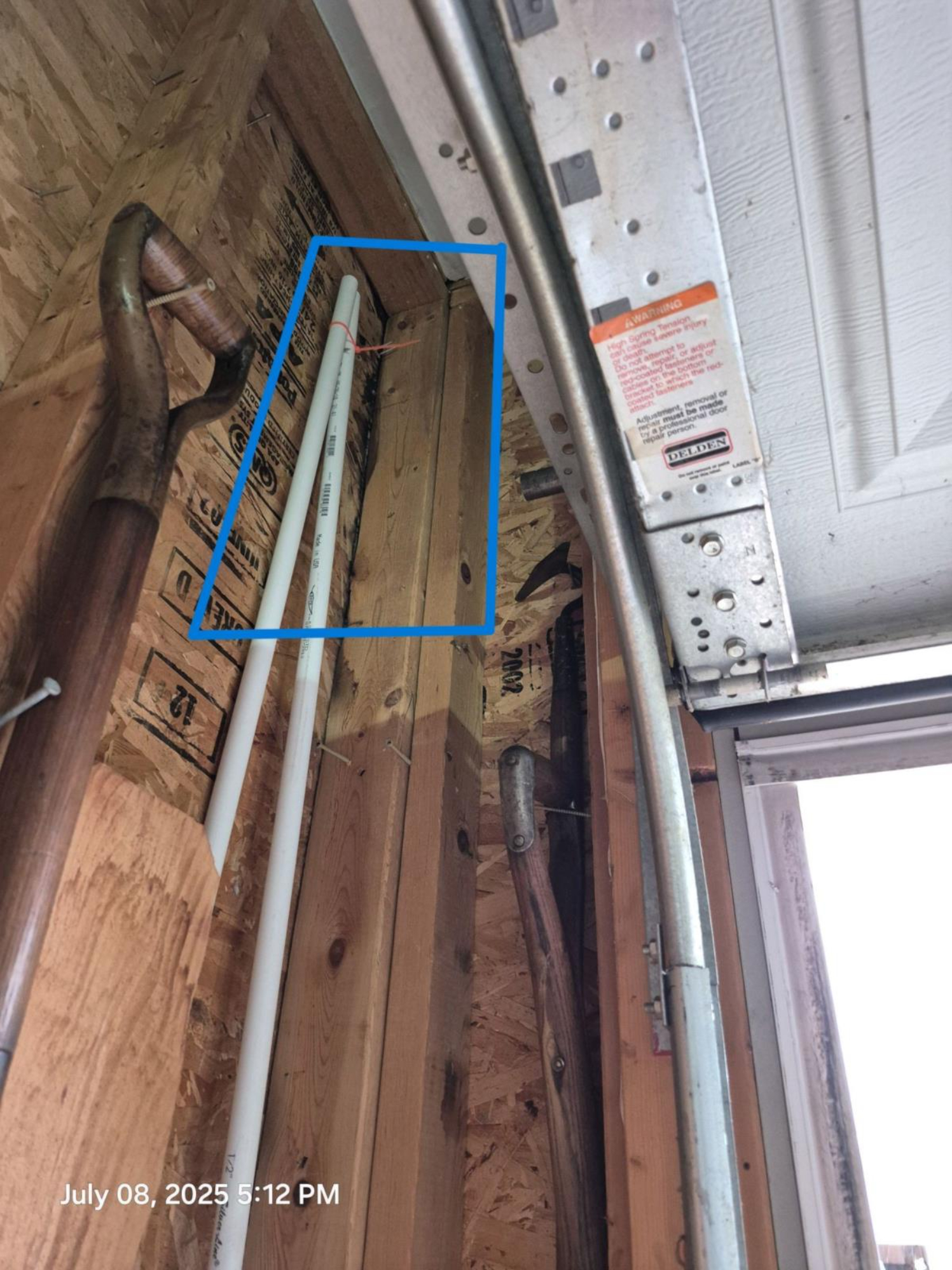
Where was the water coming from?
Once I validated that there was in fact water inside the home’s structure, I started looking around to determine the source. What I found Ire multiple defects and compounding issues that led to this issue. Let’s break down the issues, and then I’ll show pictures in turn of each defect that led to this. An interesting side note, this homeowner has lived in the home since it’s construction, and had the roof replaced 6 years prior, after experiencing storm damage and the homeowner had the gutters up-sized to 5” gutters from 4” gutters due to the heavy rains.
Multiple Issues Discovered:
- Second Story Gutter discharging directly onto the roof
- Missing Drip Edge Flashing
- Roof Underlayment Did not extend to the end of the sheathing
- Too small of a gutter for the roof area it was supporting.
These 4 Issues compounded to an issue that resulted in rotten roof sheathing at the corner of the garage and ultimately a leak starting. Thankfully the homeowner caught it early!
Let’s start with the second story gutter.
Gutters should discharge directly into another gutter. This prevents the water discharge from prematurely wearing the ashphalt shingles in the path of water (which can lead to leaks) or causing extra splash that can get into place you don’t want it. Like around flashing at dormers or roof and wall intersections.
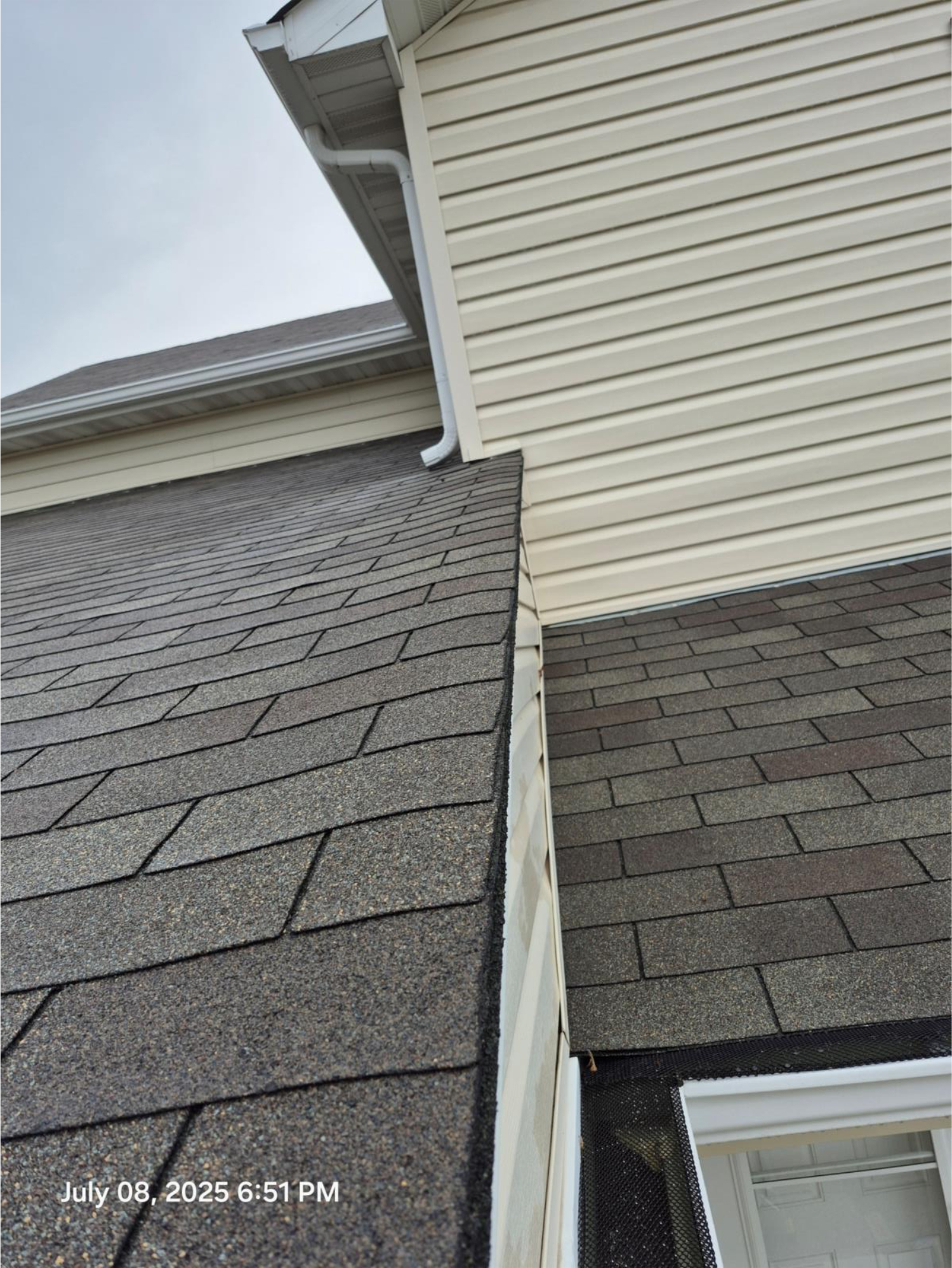
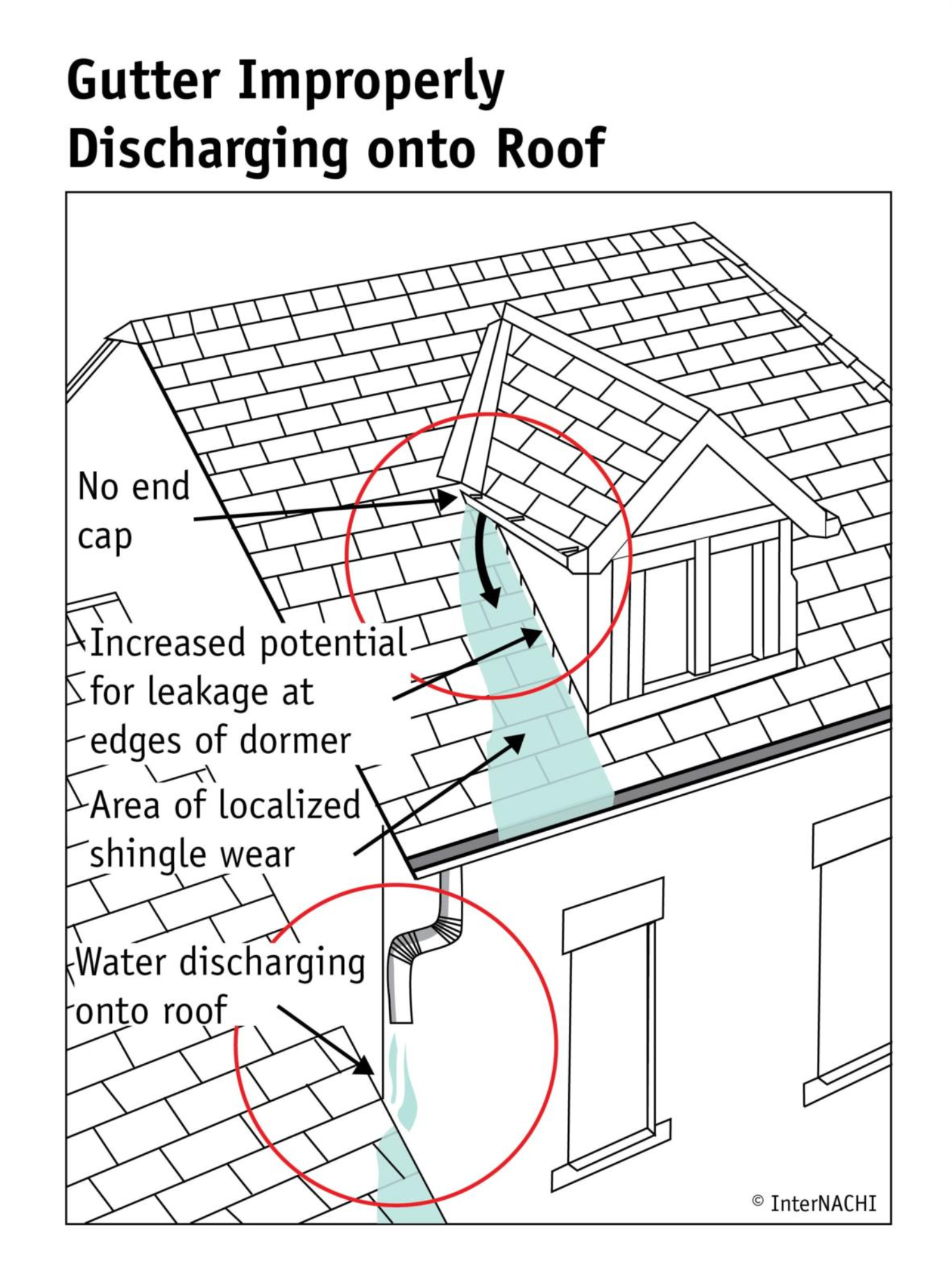
Missing Drip Edge Flashing:
Drip Edge Flashing is an important piece of flashing installed on the eaves and rakes of a homes’ roof. It provides an extra level of protection to help guide water away from places you don’t’ want it. In the picture after the diagram, what I see is the siding trim, not actual drip edge flashing. Drip edge flashing would be installed directly to the roof sheathing and go down over the siding trim.
A drip edge is a simple yet essential piece of metal flashing—typically aluminum, galvanized steel, or copper—installed along the edges of your roof (eaves and rakes). Its importance lies in several key protection functions:
- Directs Water Away from Roof Edges
- Prevents Water Damage and Wood Rot, especially at the fascia boards
- Reduces Ice Dams
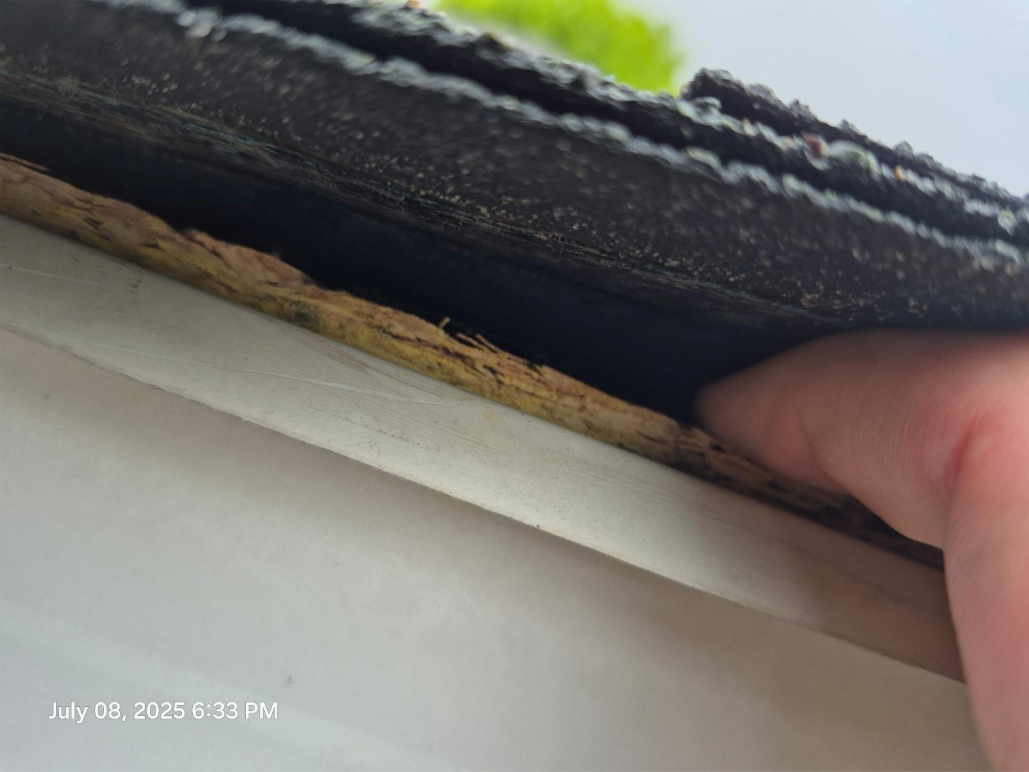
Roof Underlayment Not Properly Installed
The roof underlayment was not properly installed when the roof was replaced a few years prior. It stopped a bit short from the edge. Everything installed on the roof works in layers to direct water to a certain spot. The underlayment is no different and acts as another protective layer to prevent water from coming into direct contact with wood, like the OSB Sheathing used on roof decking.
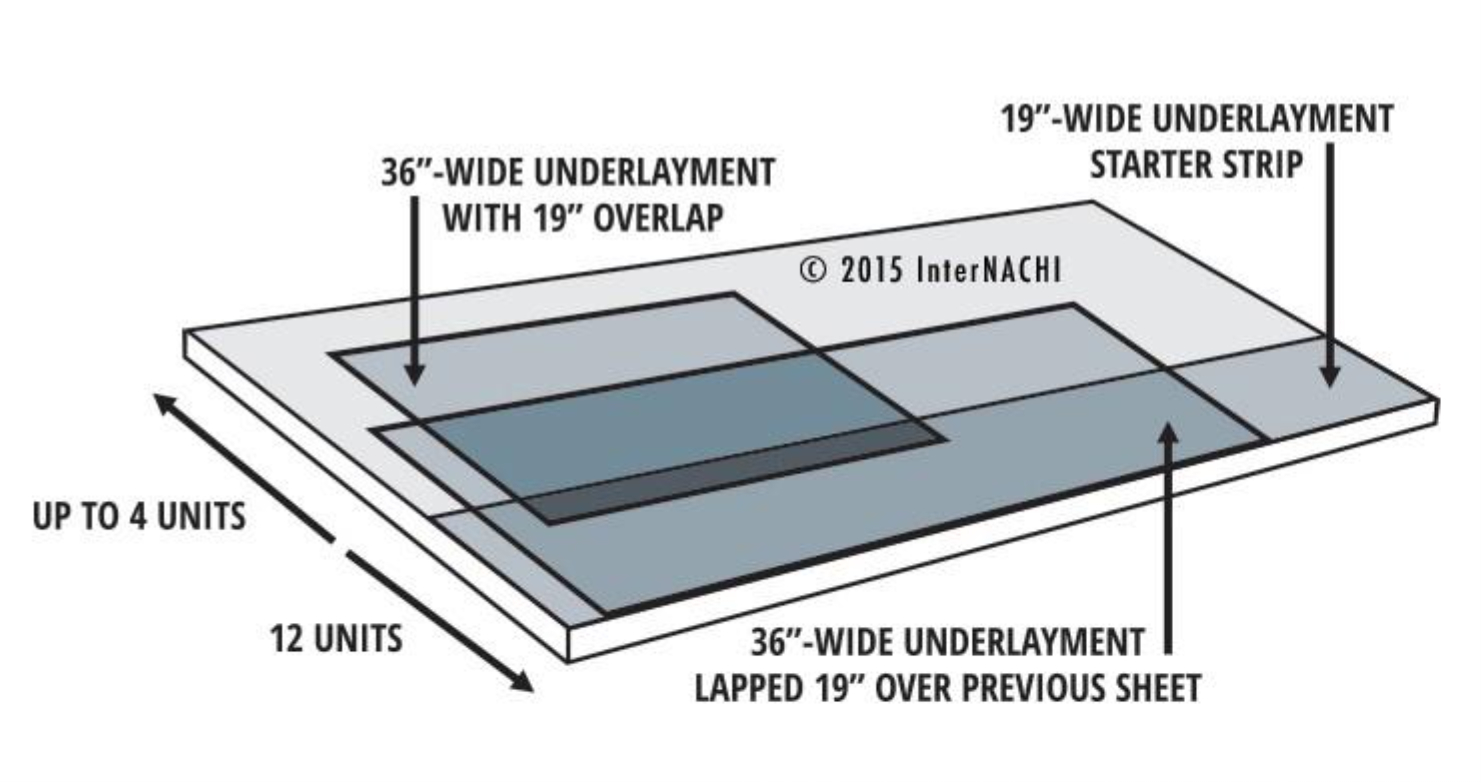
Gutter Improperly Sized
On this installation, a very small section of gutter (~14-16” long) was being tasked with handling all of the water coming off the garage, and half of the second story on the front of the house. Even though the gutter had been upsized to 5” from a 4”, it simply could not handle the volume of water it was being asked to handle. Especially when those fast, hard 1-2” rains occurred. Think of it like pouring water from a pitcher into a cup too fast and the water splashes out. Same thing, but in this scenario, it was splashing backup under the shingles, leading to wood rot and a water leak (see the 3rd picture). In the second picture, I highlight with arrows, the path the water must take from the roof to the gutter, downspout and eventually daylighting away from the house. The homeowner has done the proper thing in having the gutters terminate and daylight away from the home.
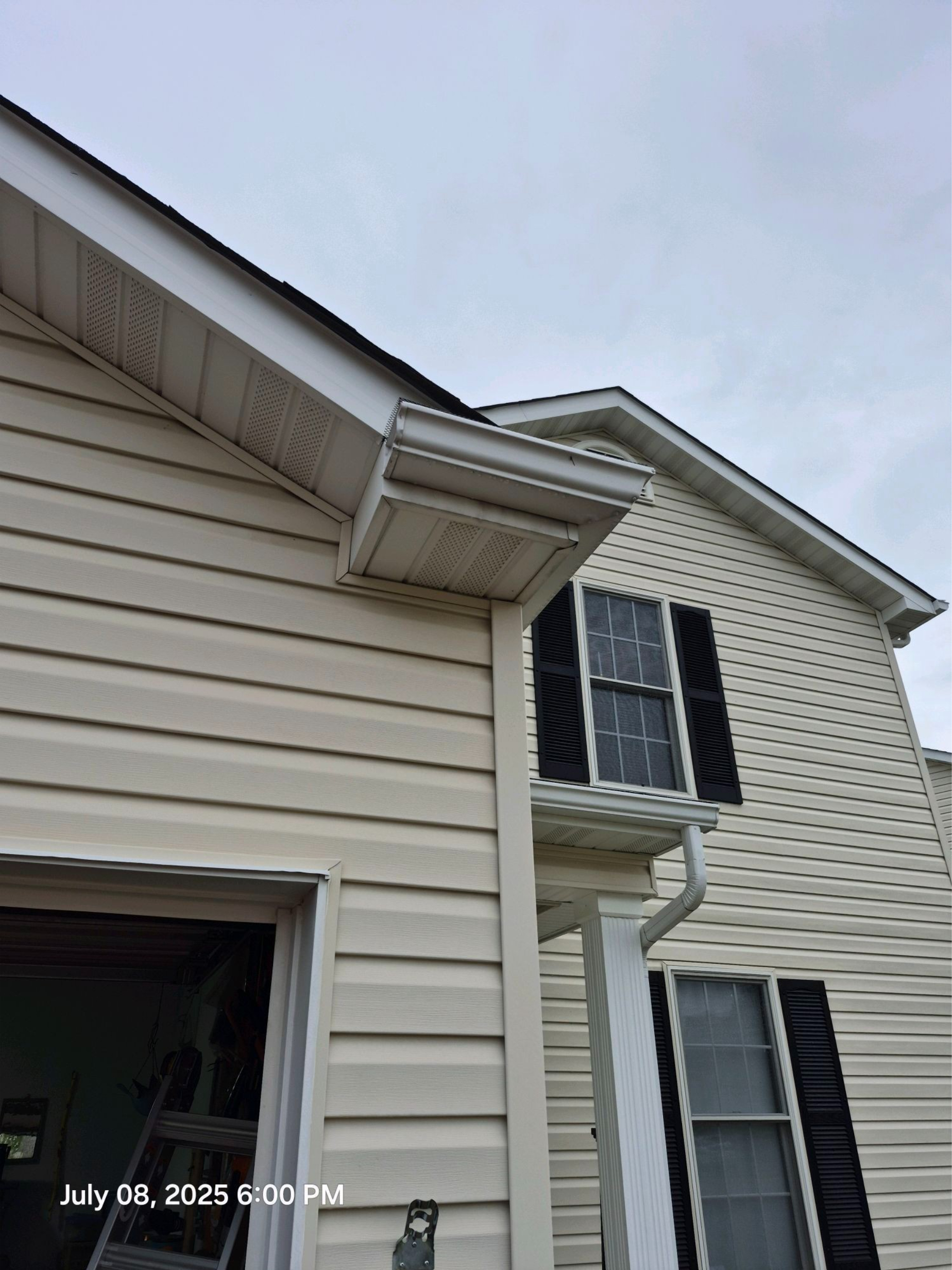
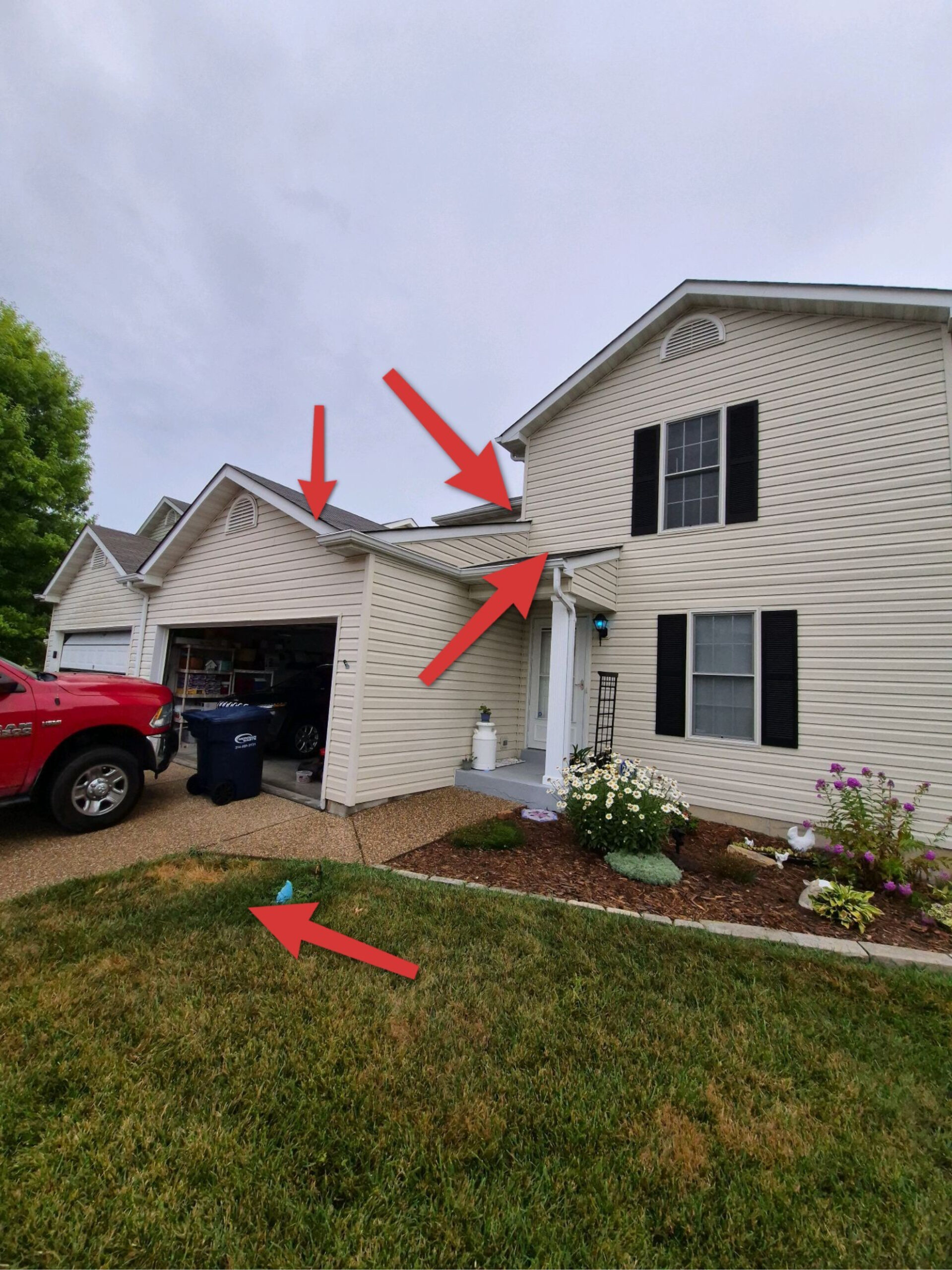
What Happened Next?
After showing the homeowner our findings, documenting it in a report and discussing possible solutions, the homeowner contacted the roofer I recommended. The roofer was able to quickly come out, review the roof and support the homeowner on their insurance claim. The result of all this is the homeowner is getting a new roof and their insurance claim was approved. Total Roof Cost $10,000. Thankfully they Ire able to spot the leak early before it got worse and led to increased damage inside the wall structure leading to even more expensive repairs.
As this repair project has commenced, I’ve provided follow-up support to help the homeowner and provide advice and guidance to properly correct the issues I found.
Specifically, I’ve continued to provide guidance on the following topics:
- Roof Replacement
- Decking Replacement
- Drip Edge Installation
- Additional Ventilation (turtle vents) as recommended by the roofing contractor
You can read the full report here.
Other Homes in the Neighborhood
While onsite, I looked around the neighborhood and noticed that every townhome on the street was configured to be the exact same with the same small gutter on the front corner of the garage and a second story gutter discharging into the roof valley of the garage. Since these Ire all spec houses built at the same time in this neighborhood, this is not surprising, and I would recommend those homeowners check their houses for similar issues. While there were other factors at play with this home, it’s not unreasonable that other homes in the subdivision may be having similar issues.
Another observation while in this Wentzville, MO subdivision, is that while it’s been established for almost 30 years, there’s not very many big trees in the area and the townhomes seem to get a lot of wind. This was evidenced by seeing several homes in the same subdivision with missing shingles, uplifted shingles and/or tarped roofs, waiting for repair. It’s important to maintain and regularly inspect your roof. See our blog post on Roof Maintenance for more information.
FAQ’s:
What to look for in Second Story Gutters? Follow the discharge path, ensure they are properly discharging!
Are missing drip edge flashing a common defect? Unfortunately, yes. I do notice this very often. All Flashing should be properly installed to prevent water issues!
What should I do If I have concerns about my gutters? Schedule a home inspection with us today, you can book our Drone Roof Inspection to get a thorough inspection of your gutters.
Should I Install larger Gutters? Yes, I recommend it, here in Missouri, I get heavy, hard, fast rains throughout the year, bigger gutters can help manage the water!
When is the best time to have my roof inspected? You should get your roof inspected after a big storm or series of big storms. Wind can uplift or remove shingles and hail can damage shingles. Finding any issues early can prevent even minor leaks from becoming large problems. I often get back to back strong storms in Missouri, so inspecting your roof regularly is a wise investment to ensure your home stays in excellent condition.

